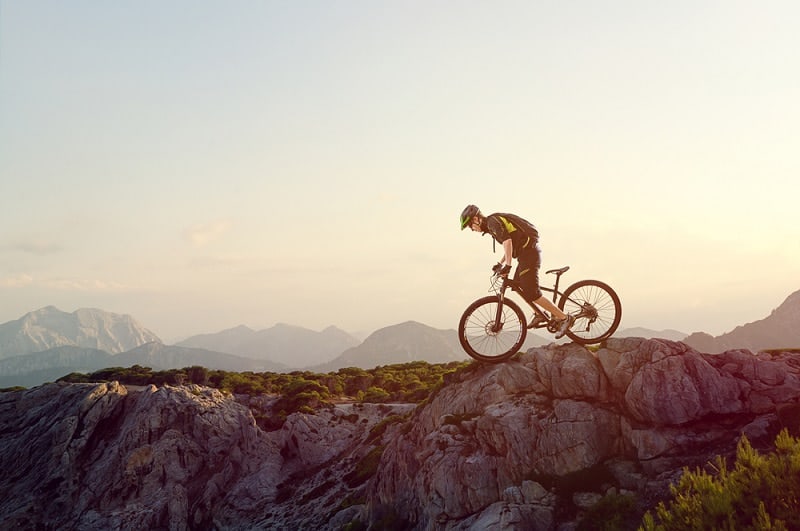If you are mountain biking for the first time and it is getting a bit rocky for your liking, it’s time to check on your bike’s suspension.
Suspension is your bike’s shock absorber. They absorb and rebound all the force your bike typically runs into. While they are built for immense amounts of pressure, they aren’t invincible mechanisms.
You may still damage them through the regular wear and tear of off-road biking. Some bikes don’t even come with a form of suspension.
Yes, there are bikes without suspension systems, and while you can use them for mountain biking, you should opt for bikes with suspension when riding on rough terrain.
Suspension systems help cyclists maintain more control, especially when riding down a hillside. It also gives bikes a significant boost in traction to help navigate muddier roads better.
When an unforeseen obstacle crosses your path, your bike will be better equipped to fully stop during faster speeds and greater momentum.
There are three kinds of bikes:
- Fully Rigid
- Hard Tail
- Full-Suspension
While you can use any of the three variants for mountain biking, what’s the best option for your riding style?
Contents
What Level of Shock or Suspension Does Each Bike Have?
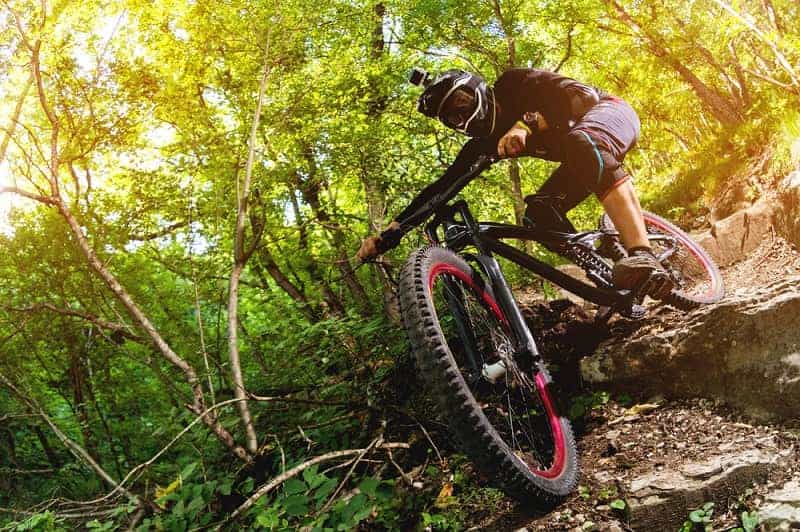
A bike’s suspension affects every cyclist’s performance and plays a significant role in the overall riding experience.
While suspensions aren’t necessary for road bikes, having one on a mountain bike is highly recommended.
Road bikes are often used in races that typically take place on smooth and even pavement, which don’t require the same traction as rougher terrain.
If you ride on a mountainside, you are faced with more unpredictable elements, such as rock formations, trees, bushes, natural clusters, various debris, ditches, and trenches.
Without suspension, cyclists have less control over their bikes. However, suspension systems add more weight to bikes.
The extra added weight is why most cyclists in competitive events opt for lightweight, fully rigid bikes.
Fully Rigid Bikes
If you remember the retailer telling you your bike is fully rigid, it means you have been relying on nothing but your bike’s basic configuration with no supplemental reinforcements.
Fully Rigid Bikes have no suspension. They are usually road bikes used in racing and leisure park riding.
This type of bike is better suited for city cycling. However, suspension systems make turning sharp corners and dodging negligent motorists easier.
Rigid Bikes are more rudimentary in build than other bikes. They are considered retro and old school.
You might find them in the shed of mountain-biking enthusiasts or a retro retailer.
They aren’t just fashionable to have. A rigid bike’s functions, while primal, are probably the best teachers of essential cycling skills.
With fewer artificial systems to cushion your every mistake, cyclists can learn new skills or sharpen essential ones.
Fully rigid bikes teach you to calculate each move more precisely from further away.
It’s like when you first ride your bike without training wheels and have to rely on your own calculations to achieve a proper balance on your own.
Because suspension helps cushion your mistakes and maneuver your systems better based on your last-minute decisions, you feel the impact of your mistakes less.
Without suspension, you feel the impact of your choices at every turn.
Sharpen your basic cycling skills by taking a fully rigid bike out for a spin. You might be surprised by how much you depend on artificial systems to determine your performance.
Of course, it’s inadvisable to try one out on a mountainside for the first time. Try it out in your neighborhood and take a few sharp turns with it.
However, you might have worn your suspension out if your hardtail or full suspension bike starts to respond like a fully rigid bike.
Why Is Riding a Bicycle with Worn Suspension Riskier than Rigid Bikes?
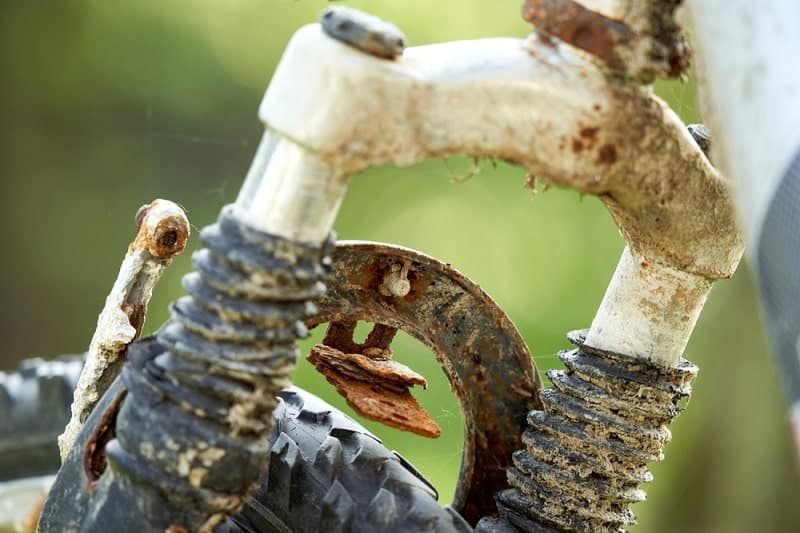
You might think, “there are bikes that come with no shock absorbers like rigid bikes, so my bike with worn-out suspension might not pose too much of a risk.”
While rigid bikes have no suspension, bikes with suspensions have oil to help lubricate their shock-absorbing components.
When you wear out your shocks, an oil leak may occur. A leak in the system poses various threats.
How to Check Your Bike’s Suspension?
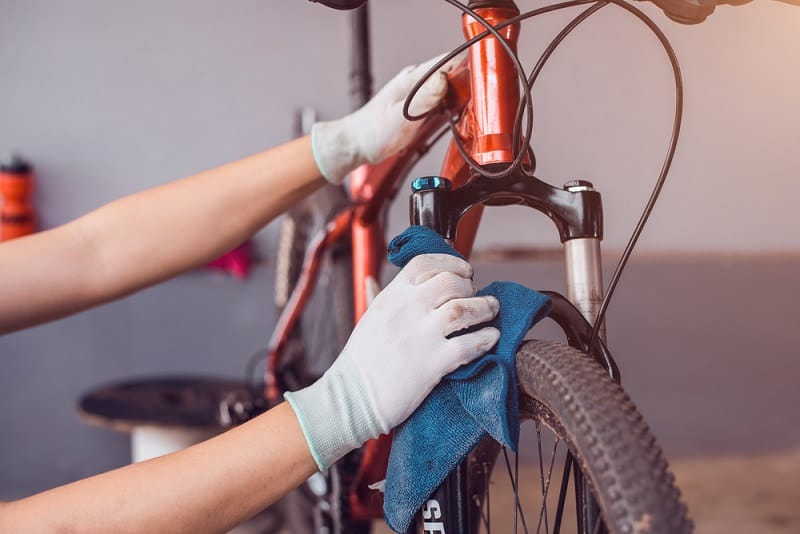
Oil leaks aren’t the only indicators of underlying issues your bike might be having. If something feels wrong or off, it’s best you stop, step down, and examine your bicycle.
There are plenty of issues you might encounter with your bicycle’s suspension. However, not all of them will warrant a visit to the repair shop.
Some issues you can remedy on the spot, while other problems will require professional attention.
- First, determine whether you have a Full-Suspension system or a Hardtail.
Hard Tail

A hardtail bike, a fan favorite among cyclists, has front suspension without any in the rear.
Its singular suspension fork makes it lighter yet equally reliable. Competitive cyclists who prefer their bikes with suspension opt for a hardtail.
Its simple yet versatile system is more affordable than full-suspension bikes.
Full-Suspension

Bikes with full-suspension systems are better for mountain marathon riders or cross-country cyclists.
Its dual suspension provides more comfort and eases tension away from your body, which is essential for longer rides.
Less stress on your body makes for better riding efficiency.
Cyclists may save energy by not having to dodge ditches as much to protect themselves against intense impacts.
- Second, inspect your bike for an oil leak. One drop is too many.
What to Do in Case of an Oil Leak?
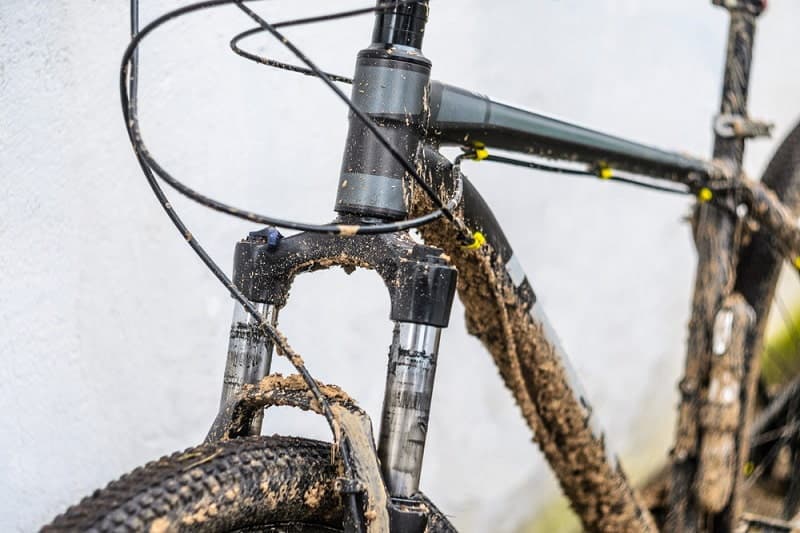
You might have heard, “it’s just residue, wipe it off and ride along.” But don’t be too hasty in dismissing excess oil.
While sometimes an oil leak is just residue, you risk too much by dismissing it as such every time.
If you regularly get your bike serviced by professional mechanics, it may only need a good wipe-down.
However, if it’s been a while since your last tune-up and there are noticeable differences in how your bike turns or stops, there might be a hole in your fork’s seal.
If you have duct tape or masking tape, you can use it as a quick fix, but take it into the shop as soon as you can. In fact, some cyclists carry good ol’ Gorilla Tape in their riding kit for emergencies such as this.

Unlike rim tape, which is pretty good protection for your wheels, Gorilla Tape and other durable tapes can patch up seals tighter for longer. Some mechanics even use Gorilla Tape to patch up tires instead of rim tape. It’s a quick fix many have sworn by.
Remember to get to the root of the problem and inspect your bike for further damage to the fork and other components.
Dust and other debris that disrupt the functions of your stanchions may cause abrasions to the oil storage located on the bottom legs of the fork. Integrate a fork lube to your suspension’s seals if you haven’t already.
The WPL Forkboost Lube helps lubricate your stanchions while keeping dust and rust off your seals.
Unchecked leaks can lead to insufficient lubrication and damage the bushes and seals, requiring a total fork overhaul.
You can avoid changing out your fork entirely by remedying oil leaks immediately.
- Lastly, calibrate your suspension appropriately. An ounce of prevention is better than costly visits to the repair shop, especially when riding mountainside, far from mechanics.
How to Calibrate My Mountain Bike’s Suspensions?
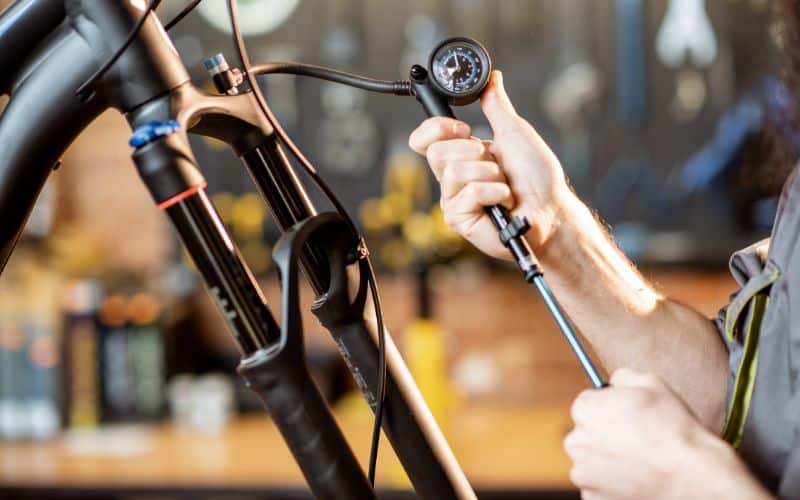
The coil spring rate (air pressure) is critical to your bicycle’s overall suspension setting. You can set your bike’s baseline by calibrating its Static Sag.
Sag determines the relationship between the cyclist and the bike through its suspension systems.
It accounts for the compression under your mass, affecting all other variables in the process. You can always recalibrate it to suit your trail, weight, and current weather conditions.
However, sag settings must always be set accordingly. It isn’t a slow-cooker you can set and forget.
Sag set too high for your current ride, and your suspension might seem rough with inadequate traction. In contrast, setting it too low will leave you with insufficient support.
For mountain biking, sag settings are best set between 25-35, which is the optimal range for sufficient suspension, adequate traction, and overall riding comfort.
You will be able to glide through ditches with minimal impact on your lumbar.
Which Form of Suspension is Best for Mountain Biking?
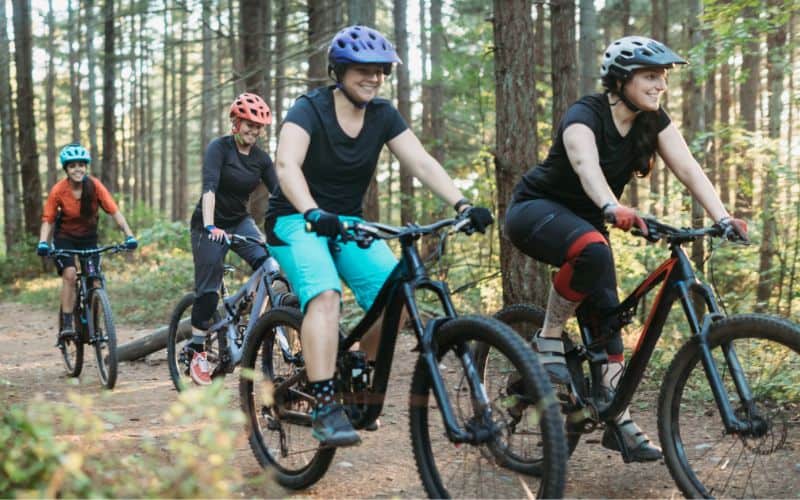
As mentioned, you can go mountain biking without any form of suspension safeguarding your rear.
Still, having suspension is highly recommended.
For your safety, comfort, and energy efficiency, bikes with built-in suspensions are better suited for mountain biking than bikes without shock-absorbing systems.
Riding rigid can lead to long-term problems over time. You should keep fully rigid bikes on the pavement, where they belong.
However, choosing between a hardtail and full suspension is up to you.
Hardtail Versus Full-Suspension
A hardtail is more affordable, lightweight, and easier to repair and maintain. However, it cannot give you the cross-country comfort that bikes with full suspension do.
They are equally durable and reliable. Each requires routine maintenance and prompt repairs to uphold quality.
You will have to scrutinize your riding style to find a better fit when choosing between the two.
We suggest you stick with a hardtail for multi-terrain and full suspension for exclusive off-trail riding.
Please remember that if you are riding a mountain bike with worn suspension, carry on as cautiously as possible.
If you are looking for a more reliable suspension system on your bike, integrate a fork with versatile adaptabilities, like the RockShox 30 Silver TK Coil Forks .

It’s an affordable, well-rounded option for cyclists needing reliable suspension integrations.
Whatever you choose, don’t forget to maintain them properly. The suspension will help keep you safe and comfortable if you maintain them well.
